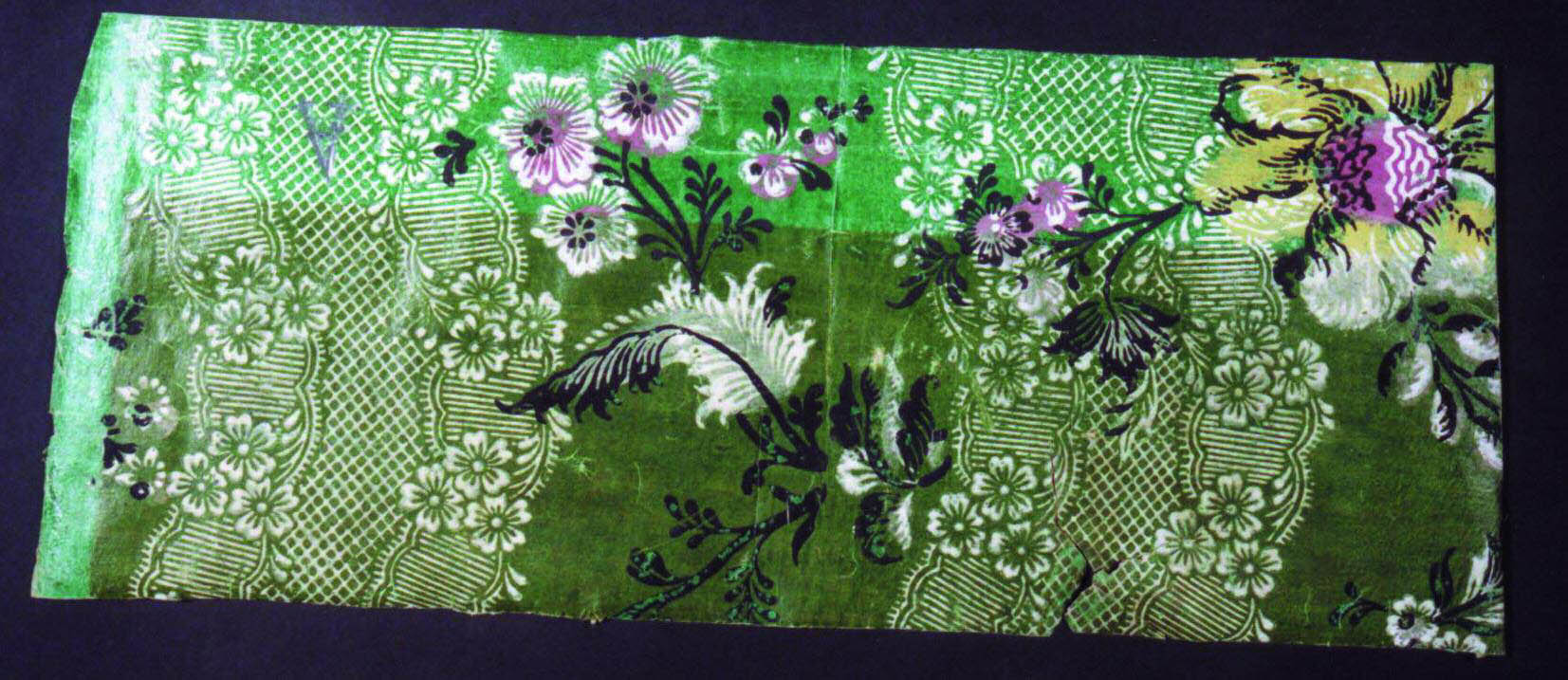INVESTIGATION, ANALYSIS, AND AUTHENTICATION OF HISTORIC WALLPAPER FRAGMENTSFRANK S. WELSH
1 INTRODUCTONOver the past two decades, awareness of the extensive use of wallpapers and associated wall coverings in 18th-through mid-20th-century American homes increased dramatically because many historic house restorations included paint and wallpaper analysis. Previously, mid-20th-century restorations of historic interiors often overlooked the cultural and decorative significance of wallpaper evidence. Many of our predecessors removed the original plaster from walls and ceilings and replastered them without recognizing the popularity of wallpapers in the periods they were studying because their primary interest focused on paint colors used on the wood trim. Now the search for the use of wall and ceiling papers is an essential part of the comprehensive finishes investigation of any Colonial, Federal, Greek Revival, Victorian, or early-20th-century building. Frequently, investigation and analysis reveal either trace or fragmentary evidence confirming the use of wallpaper at some time in a building's history, reinforcing the case for wallpapers to share an equal level of significance with paint and other features of interior decoration. Documentary study of historic wallpapers has also enhanced our understanding of their use. By the late 18th century, papers in a wide assortment of styles were available to both the upper and middle classes in urban and rural areas. A hundred years later, they were the standard interior wall finish. Papers were used to add color and pattern to a room or to imitate more expensive materials such as marble, wood grain, textile, and even architectural features. They were integral to the interior decorative scheme. The primary reason for investigating, analyzing, and authenticating historic wallpapers is to verify their use within a particular period of significance at a historic site. Sometimes there is no known wallpaper evidence, and verification of wallpaper's use requires a comprehensive sampling for microanalysis of clues. Search for and analysis of these fragmentary clues are the subject of this article. Written or pictorial documentation can also support wallpaper use, and on rare occasions, large fragments remain intact on the walls or have been removed and stored in collections. Numerous study collections offer a valuable resource for information on patterns and pigments as well as fiber content. Examining papers in these collections also helps refine the dating process, so important in determining when particular papers might have been used. The examination may also increase the accuracy of determining how the colors of a pattern appeared when first manufactured. Two examples demonstrate these points. In the early 1990s, 22 papers in the study collection at the Colonial Williamsburg Foundation were analyzed for scholarly purposes before the reissue of the foundation's reproduction wallpapers. One was a yellow, brown, and blue French border dated, based on style, between 1790 and 1820. Microscopical analysis of its fiber composition and paint pigments revealed, however, that its bright yellow distemper paint was tinted with chrome yellow, a pigment not commercially available until the second decade of the 19th century (fig. 1). The other sample, a fragment of an English wallpaper, had been installed in the James Geddy House in the 1960s and was later removed for study. The paper discolored and had a dull brownish appearance where it was exposed to the environment, but a portion at its seam was covered by an overlap that protected the original vibrantly colored verdigris green glaze background (fig. 2). This green background color is one of the best surviving examples of the intended appearance of an 18th-century verdigris pigment resin glaze applied over a painted
To properly understand the significance of a particular wallpaper fragment or evidence of the use of wallpaper within the intended interpretive context, five major avenues of investigation and evaluation must coalesce. By and large, they emphasize the importance of a meticulous search for evidence, a thorough analysis to determine material composition, and a comparative reference to what is known of wallpaper manufacturing processes and, when possible, pattern styles. The five principal points are:
An approach covering all five points of investigation, evaluation, and analysis will more accurately verify wallpaper use, determine pattern and coloration, and authenticate a wallpaper fragment as one made or used within a selected interpretive period. |

